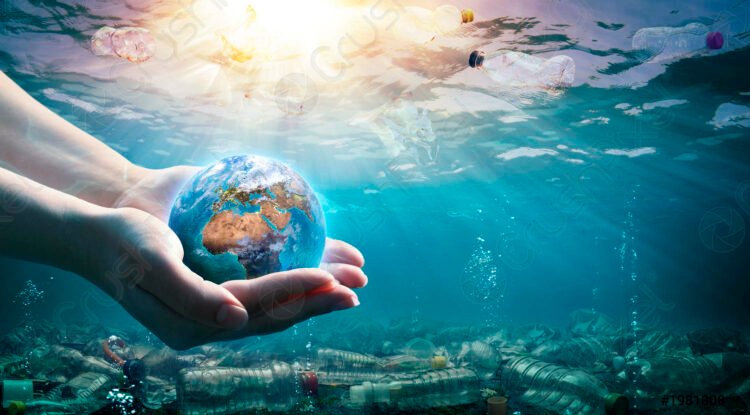With humans’ high dependency on it, plastic pollution has become a growing concern for environmentalists and researchers. Now, in a recent study, researchers have shed light on how plastic has seeped into all spheres of the environment. In the study, published in journal Nature Reviews Earth and Environment, a team of 33 researchers have estimated that the level of plastic pollution could rise to 80 million metric tons per year by 2040.
The team includes 33 experts from the GEOMAR Helmholtz Centre for Ocean Research in Kiel, the Institute for Advanced Sustainability Studies, and Alfred Wegener Institute. The study showed that plastic had managed to contaminate every sphere of the environment including the soil, air and water bodies.
These plastic particles are believed to be transported by ocean currents and rivers into the depths of even the Antarctic or the Arctic Ocean. However, the researchers have highlighted that wind can work as an efficient medium to transport these particles to the most remote places on Earth.
As estimated in the study, 0.013 to 25 million metric tons of micro and nanoplastic makes make their way across countries, oceans and continents through ocean air, sea spray, and fog. Off all the mediums, researchers have claimed that wind or air can contribute the most to polluting the oceans. According to co-author of the study Dr Melanie Bergmann from the AWI, “Air is much more dynamic medium than water.” She added that micro and nanoplastic can penetrate the untouched regions of the planet more quickly through air.
Also Read | What are microplastics?
The plastic particles first rise into the atmosphere through human activities like emissions from industrial processes or wearing of tyres. Once in the atmosphere, these particles, predominantly microplastic, are transported to the ocean and other ecosystems through a much faster route.
Researchers also underlined that microplastic make their way into the ocean through eroded beach sand. Bubbles containing microplastic are formed in the ocean due to factors like wind, sea spray, and waves. On getting burst, these bubbles release the particles into the atmosphere which are then cable of polluting even the polar regions. (Source: News18)





